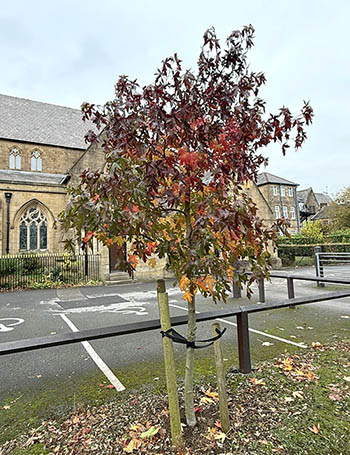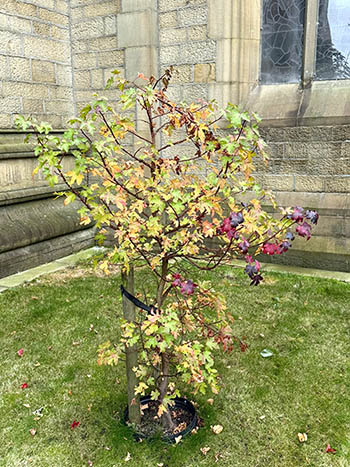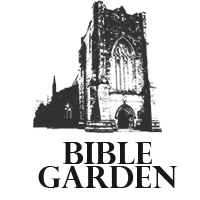Amber Tree/Balm (Liquidambar styraciflua)
Map Position: 8
In general terms, “Balm” is a liquid or cream applied to skin to heal or sooth it. Its ingredients can vary. In religious rituals it is an ingredient of anointing oils. It was, and still is, a very valuable product, traded over long distances.
Today, it is not clear which plants are referred to as balm tree in the Bible.
Following most scholars, we have chosen to plant Styrax officinalis and Liquidambar orientalis which grow in the Holy Land and were most likely in biblical times already used to make balm and anointing oils. The resin of Styrax officinalis is said to have antiseptic and expectorant properties. It was used for perfumes and incense as well. Its fruits are used to make rosaries.
Frankincense is the resin of the Boswellia tree which does not grow in our climate.
Biblical
The Bible mentions Balm and Stacte, but not Styrax and Liquidambar.

To prepare the incense for burning at the altar of the Lord Moses had use many ingredients, including stacte (Exodus 30.34).
Joseph was seized by his brothers and thrown into a pit. They sold him to Ishmaelites who happened to be passing by, their camels carrying balm among their goods (Genesis 37.25). Later, when their father sent Joseph’s brothers to Egypt, he told them to take gifts with them, including “a little balm and …almonds” (Genesis 43.11).
The Lord instructed Moses how to prepare the incense to be used to worship the Lord in the temple; one of the ingredients was “Stacte” (Exodus 30.34).
The prophet Sirach teaches us about the wisdom of Solomon and compares the effect of wisdom on people to the pleasant smell of stacte and other incense (Sirach 24.15 - RSV).
Jeremiah explains that the Lord will punish sinful living and there will be no remedy or cure, “no balm of Gilead, no physician” to help (Jeremiah 8.22). Balm is recommended as a remedy for pain (Jeremiah 46.11 and 51.8).
Because balm is very valuable it is used as a commodity (Ezekiel 27.17).
